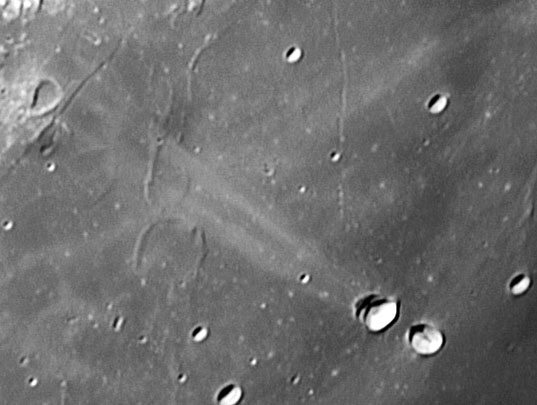Difference between revisions of "May 20, 2004"
| (4 intermediate revisions by the same user not shown) | |||
| Line 1: | Line 1: | ||
__NOTOC__ | __NOTOC__ | ||
=A Tunnel Thru the Moon?= | =A Tunnel Thru the Moon?= | ||
| + | <!-- Start of content --> | ||
<p align="center"> | <p align="center"> | ||
<table width="640" border="0" align="center" cellpadding="6" cellspacing="2"> | <table width="640" border="0" align="center" cellpadding="6" cellspacing="2"> | ||
| Line 8: | Line 9: | ||
<tr> | <tr> | ||
<td><div align="center"> | <td><div align="center"> | ||
| − | [[File:LPOD-2004-05-20.jpeg|LPOD-2004-05-20.jpeg]] | + | [[File:LPOD-2004-05-20.jpeg|LPOD-2004-05-20.jpeg]] |
</div></td> | </div></td> | ||
</tr> | </tr> | ||
| Line 24: | Line 25: | ||
<p class="story"><b>Related Links:</b><br> | <p class="story"><b>Related Links:</b><br> | ||
[http://observingthesky.org/index.php?p=174 K.C. Pau]<br></p> | [http://observingthesky.org/index.php?p=174 K.C. Pau]<br></p> | ||
| − | <p | + | <p><b>Yesterday's LPOD:</b> [[May 19, 2004|A New Observing Guide]] </p> |
| + | <p><b>Tomorrow's LPOD:</b> [[May 21, 2004|Volcanic Craters on the Moon]] </p> | ||
</tr> | </tr> | ||
</table> | </table> | ||
| Line 30: | Line 32: | ||
<p align="center" class="main_titles"><b>Author & Editor:</b><br> | <p align="center" class="main_titles"><b>Author & Editor:</b><br> | ||
[mailto:tychocrater@yahoo.com Charles A. Wood]</p> | [mailto:tychocrater@yahoo.com Charles A. Wood]</p> | ||
| − | < | + | <!-- Cleanup of credits --> |
| − | + | <!-- Cleanup of credits --> | |
| − | < | + | <!-- Cleanup of credits --> |
| − | + | <!-- Cleanup of credits --> | |
| − | < | + | <!-- Cleanup of credits --> |
| − | + | <!-- Cleanup of credits --> | |
| + | <!-- Cleanup of credits --> | ||
<p> </p> | <p> </p> | ||
| − | ---- | + | <!-- End of content --> |
| − | + | {{wiki/ArticleFooter}} | |
| − | |||
Latest revision as of 19:17, 7 February 2015
A Tunnel Thru the Moon?
Image Credit: K.C. Pau |
|
A Tunnel Thru the Moon? Messier and Pickering (or Messier A as nomenclatural "reformers" renamed Pickering) are perhaps the most perplexing craters on the Moon. Their shapes are not standard round ones, their rays are parallel mysteries, and their obviously related origins have been controversial. Do the parallel rays imply an intelligent construction of a railroad? Did a meteor smash into the ground creating one crater, tunnel thru and come up, forming the other? The most ridiculous ideas are the most fun, but we must remember they were offered by observers who were completely flummoxed by this supremely odd crater pair. The truth, it turns out, is also pretty amazing. The answer was figured out by Don Gault, a NASA engineer and scientist, and his colleagues who used a vertical gun to shoot small projectiles into targets at hypervelocities of several kilometers per hour. Their goal was to study the physics of impact cratering. After they had successfully done that they experimented with oblique impacts, discovering that craters stayed relatively circular until the impacting projectile was less than 45 degrees above the surface. They were able to reproduce the non-circular shapes and strange ray patterns of Messier and Pickering with nearly grazing impacts of less than 5 degrees. The projectile came in low over eastern Mare Fecunditatis and excavated Messier - notice its faint rays just at right angles to the crater's long axis. Part of the projectile ricocheted forward and formed at lower velocity Pickering and its parallel downrange rays. Weirder than fiction! Technical Details: Related Links: Yesterday's LPOD: A New Observing Guide Tomorrow's LPOD: Volcanic Craters on the Moon |
Author & Editor:
Charles A. Wood
COMMENTS?
Register, Log in, and join in the comments.




